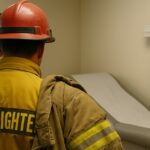Trauma response has always been a difficult field. With so many variables and factors that can contribute to the success or failure of a rescue, it’s no wonder trauma response teams are often seen as heroes in their communities. But now, Pittsburgh medics are introducing a revolutionary new concept: whole-blood ambulances.
What are Whole-Blood Ambulances?
Whole-blood ambulances are a concept that has been around for some time, but it hasn’t been until recently that the technology has become advanced enough for it to be practical. Whole-blood ambulances are equipped with a variety of medical equipment, including a refrigerator that keeps a supply of blood and a specialized centrifuge that separates the blood into its components, including red blood cells, platelets, and plasma. This allows medics to quickly provide the right type of blood to a patient who is in need.

The idea behind whole-blood ambulances is to provide faster and more effective trauma response. By having the right type of blood on-hand, medics can act quickly and provide the right type of care that can help a patient survive and recover faster. The technology also allows for more efficient transport of patients, as the whole-blood ambulances can be used to transport critically ill patients to the hospital for further treatment.
The introduction of whole-blood ambulances in Pittsburgh is a big step forward for trauma response. The concept has the potential to save many lives, as it can provide the necessary blood quickly and efficiently, and it can also help relieve some of the stress on trauma response teams.
Overall, the introduction of whole-blood ambulances in Pittsburgh is a great step forward for trauma response. The concept has the potential to drastically reduce the amount of time it takes for medics to provide the necessary treatment to a patient, and it can help to save more lives in the process. It’s a great example of how technology can be used to improve the lives of those in need.
It’s also a great example of why local first responders need proper funding to be able to supply the staff and equipment needed to save lives faster in the future. When the time comes, don’t forget to support your first responders at the ballot box.
Over the past few years, public health officials have become increasingly aware of the real occupational dangers firefighters face. Many of these go beyond the immediate, invisible damage – posing as extra hoops when the time for compensation is due. How are Mississippi firefighters dealing with this?
Image Credit: Photo by Mat Napo on Unsplash








